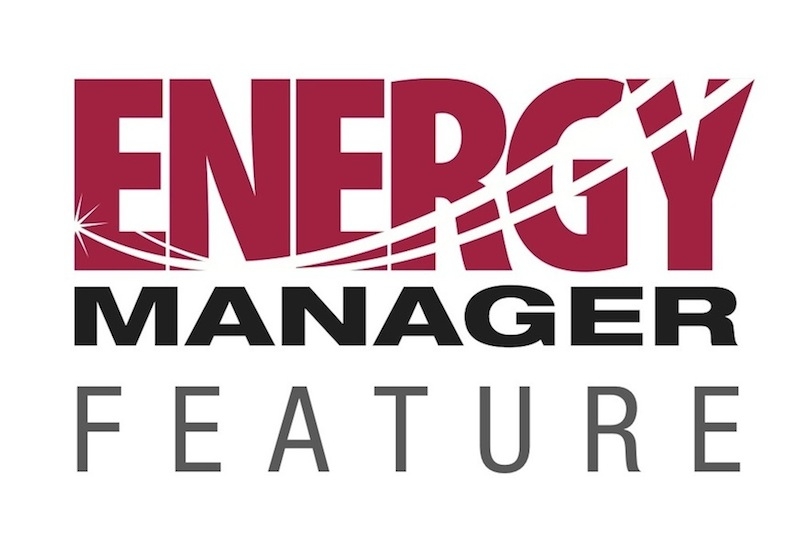
Industrial
Institutional
News
Leveraging IT to go from energy reporting to energy intelligence
May 6, 2015 - The following lays out a new vision of how large organizations can truly understand energy consumption... which they must, because ever-increasing energy costs reduce profit margins, and traditional reports aren’t providing answers.
May 6, 2015 By Pieter Noordam

Power consumption is a key contributor to economic and environmental performance. Power quality contributes to equipment reliability and uptime. According to a 2013 LNS Research study, 39% of respondents listed energy metrics as the top challenge in meeting energy efficiency goals. That percentage would likely be significantly higher today. The reporting systems now in use simply aren’t doing what’s needed.
To make necessary changes, organizations require accurate and timely energy data to measure performance against corporate goals. Currently, that’s an extremely costly and error-prone challenge for organizations of nearly any size. Data reported by energy management systems is collected in isolated silos with no plans for solving the core problem of simply and immediately understanding energy use and costs. In most places it ranges from being extremely slow and complicated to nearly a black art.
Something far more useful than existing management approaches are essential for large energy users, such as data centres, industrial manufacturing, institutional, commercial or government entities.
The solution under our nose
Ironically, mining the energy data—currently being collected by businesses’ large metering systems infrastructure investments—can be effectively liberated to gain a clear, timely understanding and control of energy costs and quality-of-service (QoS). This approach aligns incentives from operations and financial personnel by reducing consumption and cost while improving quality.
Advanced software systems now focus on a myriad of business functions—from manufacturing processes to sales and marketing—tracking and analyzing data, and increasing productivity. Yet the billions of dollars spent annually on energy costs have remained untamed, thanks to the fragmented state of energy management, decentralized decision-making and a disjointed vendor landscape. Now a fresh approach, when correctly applied, eliminates the problem, quantifies it financially and helps businesses devise optimal solutions.
Existing so-called ‘energy intelligence’ offerings rely merely on utilities’ meters and billing data, or require a new metering infrastructure. Why not apply the organization’s existing energy & power monitoring systems (EPMSs) to provide the utility-independent, revenue-grade, real-time data necessary for a true energy intelligence?
Besides creating a truly independent and accurate alternative to utility-based systems, such an approach will provide information on QoS. Reports can include information on power quality, including sag/swell, duration, magnitude and THD—all aspects of your utility service that affect the reliability of sensitive equipment. Existing energy intelligence offerings simply aren’t addressing all facets of a facility’s energy picture, but they must.
Energy cost forecasting and reconciling the actual bills ties the meter data to the actual utility tariff billed at that meter, regardless of where it is or what it is metering. Reports gleaned from the existing metering data on energy use and cost are revenue-grade accurate (N.B. not all meters are revenue-grade. For true utility bill auditing, a revenue-grade utility ‘shadow’ meter is necessary).
Financial analysis would also include energy cost and use forecasts, as well as accrual and reconciliation features. By drilling down into the existing meter data, companies can also calculate ‘unbundled’ bills when it is buying energy independent of a utility. The proposed approach is simply a better way of managing utility bills and checking those bills for accuracy.
Beyond metering
While an energy & power monitoring system does an effective job of gathering energy related data, unlocking the benefits that data can provide can be a considerable challenge. The EPMS’s data is meter-focused, very granular and detailed, making it difficult to get a big-picture view. Data must be aggregated and filtered, then correlated across multiple sources and over time, presenting actionable knowledge. That’s energy intelligence!
Virtual metering techniques can aggregate meter data and use, doing so across business functions, departments and projects. They eliminate tedious and highly error-prone spreadsheets. Any number or combination of physical electrical meters located throughout various facilities are mathematically aggregated as several virtual meter groups or accounts. A virtual meter clearly defines the energy consumption to be attributed to each department, building and project, and important indicators like PUE or DCiE (Power Usage Effectiveness and Data Centre Infrastructure Efficiency). By monitoring energy consumption at the device, department and enterprise levels, it becomes clear how to identify energy-saving opportunities and allocate costs.
The integrated data from an installed energy and power monitoring system infrastructure and utility tariffs provide visibility to trends in usage and costs, and efficiencies across all locations, sub-locations… even specific equipment. Today that information is trapped in departmental silos. Bringing this information together in one place creates real energy business intelligence capabilities. Trending graphs, meaningful dashboards, near real-time monitors, exception alerts, location comparison reports and detailed analysis capabilities are all now possible with this level of data integration.
Electrons aren’t created equally
Energy sustainability reporting ties the electrons to their source, enabling accurate measurement of a facility’s energy-related carbon footprint. Some electricity may come from coal-fired power plants, some from natural gas, and others from green or renewable sources. Tying sources to the meter allows calculating the true carbon footprint of the electrons being used, meaning broad guestimates based on a single carbon impact formula may be abandoned. The result is a corporate energy carbon impact report that’s accurate, convenient and timely.
What’s essential is applying information technologies that allow organizations to capture clear, simple, timely, actionable intelligence about their energy costs, consumption and QoS. The data is there from their metering investment: grab it and apply it to the problem. The required innovation is software that leverages your metering investment, providing insights and cost-control capabilities that cannot be gained from utility-provided reporting.
**********
Pieter Noordam is CEO at Alchemy Unlimited, a Campbell, Calif.-based expert in energy intelligence.
Print this page